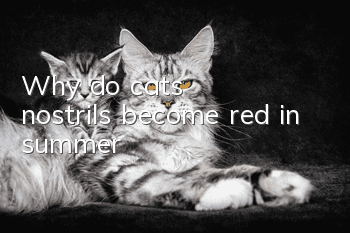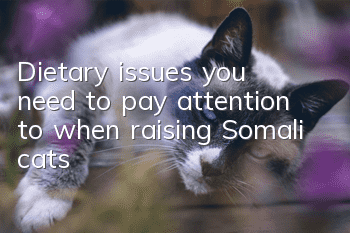Three major categories of cat diseases need to be prevented in autumn

The scorching summer is finally over, and autumn is ushering in the cool air. Autumn is the season with the greatest climate change. The temperature difference between morning and evening changes rapidly. Cats are prone to getting sick at this time, especially young cats and elderly cats with poor resistance. , the following three types of diseases are common in cats in autumn, and owners should increase their prevention awareness.
The first category is infectious diseases:
The most common infectious disease in autumn is cat plague. The scientific name of cat plague is panleukopenia. It is an acute infectious disease caused by a sharp decrease in white blood cells in cats caused by the parvoviridae virus. Its mortality rate is high and the course of the disease is long. long. Cats are in poor physical condition in autumn, and the disease-causing virus is most active in this climate. Therefore, cats that have not been vaccinated against feline distemper may be infected with the disease even if they do not leave the house.
Infected cats mainly show digestive tract symptoms, severe vomiting, followed by diarrhea, high fever, loss of appetite, extreme depression, and bloody stools in the later stages. The course of the disease generally lasts for about a week. Stopping vomiting and regaining appetite is a sign of recovery. The natural tolerance rate of this disease is very low. If your cat has vomiting, diarrhea and elevated body temperature, you should take it to the hospital immediately. If the white blood cell count in the blood test is below 6,000, the disease can basically be diagnosed. If the white blood cell count is above 2,000, with timely treatment, the cure rate is over 85%.
Type II respiratory diseases:
Weak, elderly cats and purebred cats are prone to these diseases, including rhinitis, tracheitis, bronchitis, and pneumonia. The symptoms of rhinitis are persistent nasal discharge and purulent nasal discharge from one or both nostrils, but there are no cough symptoms and it does not affect the spirit and appetite. This disease is chronic, and generally anti-inflammatory treatment is not effective, but some can heal on their own. If it develops further, it can turn into trachea and bronchitis. The symptoms are cough and sometimes nasal discharge. In severe cases, it can cause the body temperature to rise, affecting the spirit and appetite. If treated in time, it can be cured in about a week. If not treated in time or the body constitution is too poor, it may become chronic or further develop into pneumonia.
Pneumonia generally has systemic symptoms such as increased body temperature, and if it is lobar pneumonia, it can be life-threatening. To prevent this kind of disease, we should pay attention to the changes in hot and cold environment, reduce the number of baths for cats, and choose a relatively warm time for bathing. Cats in estrus should not be left outdoors.
The third category is cat geriatric diseases:
Like the elderly, when the weather is cold, especially in early winter, the incidence rates of liver dysfunction, kidney failure, sudden heart disease and diabetes are significantly higher than in other seasons. Therefore, special attention should be paid to whether there are any abnormalities in elderly cats in autumn. If found, they should go to the hospital for treatment in time.
At the end of summer, cats should be given more nutrition and physical fitness. When autumn comes, the impact of external stimulation and estrus on them should be reduced. Get vaccinated on timeseedlings and carefully observe their behavior so that your cat can survive the fall healthily.
- What does it mean if a mother cat eats a kitten?
- What's going on with the cat and the hen squatting?
- What to do if your cat’s meat pads become dry and cracked in winter
- Why do cats like to bite people? See if they have touched the cat’s restricted area?
- What is cat sucking? What does it mean to suck cats?
- Why does a cat’s coat become fluffy in winter? Does it require special care?
- How to train a Ragdoll cat? What should you pay attention to when training?
- Male cat vomits yellow water after neutering
- The cat vomited a long piece of cake
- Neutered cat vomits yellow water with foam



